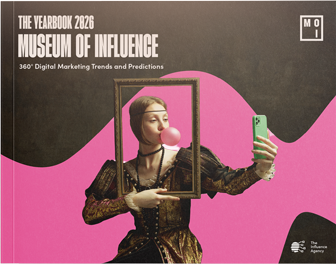Featured image:
Image alternative text:
Why personas need a reboot
For decades, marketers built personas around demographics like age, gender, income, education. But in today’s hyper-personalized media ecosystem, demographics don’t always have the same behaviors. Two people in the same age group can have completely different discovery habits, content preferences, and purchasing behaviors.
In an AI-curated feed, format and timing are just as important as the message itself. A campaign’s success is now shaped by when and where a target audience encounters it, not just what it says. That shift changes how generational marketing strategies should be designed.
Discovery has shifted from search-first to algorithm-first. Social platforms, AI recommendations, and influencer marketing greatly influence what content people see before they even think to look for it.
Generational differences still matter, but they’re expressed through behavior, not just labels. For example:
- Gen Z discovers products through social media marketing, UGC, and visual social platforms like TikTok or Instagram.
- Millennials like to blend both worlds, saving content for later, engaging with brand values on social platforms, and using mobile devices to research before purchasing.
- Gen X leans on trusted sources, mixing Google research with credible creator reviews, community-driven content on Meta, and email newsletters they’ve opted into.
- Baby Boomers prefer brands that communicate through trusted traditional media, skimmable headlines, or personalized customer service.
Priyanka Tiwari Pathak, a thought leader in AI and marketing, says that moving beyond demographics, though, fundamentally transforms audience segmentation from static groupings to dynamic, action-based understanding. “Traditional demographic segmentation tells you who your customers are, but behavioral segmentation reveals how they act. This shift enables marketers to predict intent, anticipate needs, and create timely interventions based on real customer actions rather than assumed characteristics.”
Incorporating generational marketing insights into campaigns now means focusing less on assumptions about life stage and more on how each generational cohort interacts with content in real time.
Enter: TIA Persona 3.0
TIA Persona 3.0 is a generational marketing strategy framework built for the AI age. Instead of treating personas as static snapshots, it uses AI audience segmentation to create a living, evolving map of how different generations behave online and offline. It focuses on three key pillars:
- Behavioral signals
Persona 3.0 begins by tracking how people interact with content, not just what they say they like. This includes:
- Scroll patterns: Whether an audience skims, deep-reads, saves for later, or skips entirely.
- Platform purpose: Knowing that Gen Z may open TikTok to relax, Gen X might browse LinkedIn for professional updates, and Millennials often turn to Instagram to research products.
- Device habits: Audio on versus off, portrait versus horizontal viewing, and even screen time heatmaps that reveal peak engagement windows.
These signals offer actionable insights marketers can use to tailor campaigns, from influencer marketing to digital advertising. The one thing that all generations share, though, is using AI, like ChatGPT, to help them make a decision as a customer. In an August 2025 survey done by The Influence Agency, we discovered that across all generations 81% of respondents used AI to summarize or compare options and ask for product recommendations.
- Discovery habits
Generational differences become especially clear in how people find content. Persona 3.0 looks beyond basic demographics to identify influence flows:
- Social discovery vs. search intent: Younger generations often discover brands through social platforms and creator-led content, while older cohorts still lean on direct search.
- Influence flows: Peer shares, “For You” pages, niche subreddit threads, or curated newsletters.
- AI mediation: Recommendations, feed algorithms, and search-generative AI now sit between brand and audience, shaping the customer experience before a brand’s message is even seen.
- Content format fit
Even the perfect message can fail if it’s delivered in the wrong format. Persona 3.0 evaluates:
- Short vs. longform: Matching attention spans and consumption habits of different age demographics.
- Static vs. interactive: Knowing when an audience wants to read vs. play vs. participate.
- Silent scrolls vs. sound-on: Crucial for social media posts, video marketing, and mobile devices.
- Content origin: whether the audience prefers creator-led, brand-led, or community-led storytelling.
- CTA preference: comment, click, share, or join a loyalty program.
“Behavior-first insights allow for real-time personalization: segmenting customers into frequent buyers versus cart abandoners, high-engagement users versus those at risk of churning,” says Tiwari Pathak. “Unlike demographics, which remain static, behavioral data is dynamic and provides direct evidence of customer interest and purchasing intent.”
By mapping these factors, Persona 3.0 allows marketers to incorporate generational insights into campaigns that work across diverse age groups, while still delivering the personalized, authentic brand messaging audiences expect.
Sidebar or caption: "The right content for the wrong moment is invisible. Persona 3.0 prevents the scroll-past."
Don’t worry about this part below Colin - maybe later once we sort it out
TIA Downloadable Tool (Via QR Code)
Callout Box in Spread: Build Your Own Persona 3.0
Use our editable template to map your audience by how they behave—not just who they are.
📲 [Scan the QR code] to access the Google Doc or Canva template.
Includes:
- Fill-in sections with prompts (e.g., "Preferred scroll pace: __", "Trust touchpoints: __", "Format fatigue triggers: __")
- Icons or sliders to rate format preferences
- Generational flags for discovery preferences
- Editable and brandable
Optional Add-On: Generational Persona Snapshots
Include mini-profiles to demonstrate 3.0 in action:
- Gen Z Scroller
- Discovers via: TikTok FYP
- Format fit: fast cuts, creator voiceovers
- Behavior: taps through 3 creators before committing to one brand
- Millennial Optimizer
- Discovers via: newsletter → blog → saved post
- Format fit: longform, listicles, productivity tools
- Behavior: multitasks, shares to Slack or saves for Sunday
- Boomer Browser
- Discovers via: Google + Facebook groups
- Format fit: informative, concise, visually clear
- Behavior: slower scroll, engages on familiar platforms

